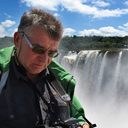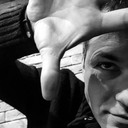0 Likes
Born 1979 in Tehran Lives and works in Tehran
Education
2001-2006 Educated in Ancient Persian language ,Neyshabour Institute ,Tehran,Iran
1999-2003 Art University, Fine Art Department, Tehran, Iran
Solo Exhibitions
2011 Gallery Isabelle van den eynde .Dubai, UAE
2010 Wrap Me Up in You ,La B.A.N.K. Gallery, Paris, France
2010 Wrap Me Up in You, B21 Gallery, Dubai, UAE
2008 God’s Gift, Aaran Gallery, Tehran
2008 Stories from the Boudoir, B21 Gallery, Dubai, UAE
2008 Nar Gallery, Tehran
2007 Mah Art Gallery, Tehran
2006 Mah Art Gallery, Tehran
2005 Golestan Gallery, Tehra
2002 Atashzad Gallery, Tehran
Group Exhibitions
2011,jaam gallery ,kuwait
2011 Shirin Art Gallery ,Thehran
2010 Alive (22 artist) Beauchamp Club, London, UK
2010 Alive THE BEAT of young Iranian contemporary art, Music room space, London, UK
2009 1001 colors, contemporary Art from Iran, New York, USA
2009 Nar Gallery, Tehran
2008 Whispered Secrets, Murmuring Dreams, Mall Galleries, London, UK
2007 Mah Art Gallery, Tehran
2007 Wishes and Dreams, touring exhibition of Meridian International Center,
Washington DC and New York, USA
2006 Lazar Gallery, Tehran
2006 Mah Art Gallery, Tehran
2005 Mah Art Gallery, Tehran
2005 Mah Art Gallery, Tehran
2004 Guest artist at the Dena Group, University Sciences Zanjan, Iran
2004 Iranian Spring, Municipality of Paris, France
2004 Gardens of Iran: Ancient Wisdom, New Vision, Museum of Contemporary Art, Tehran
VIDEO-INSTALLATION Those not in our circleAre blind to our ventureThree large, painted floral jugs lie on three beds. Each jug is filled with water and through the reflection in the water we can see a film. The film shows the goddessANAHITA, the legendary and mythical goddess of water who lives near springs and rivers To see it, the spectator must take the trouble to bend a little and search for itsDream -like imagery.
ROKNEDDIN HAERIZADEH, MARYAM AMINI, NARGESS HASHEMI ,ALIREZA MASOUMI, RAMIN HAERIZADEH, SOOFI BASEGHI& RHETT FARRELL.
2004 For BAM”
, a group show taken placing a warehouse in the center of Tehran about the tragic disaster in “BAM”, the historic city on South-east of Iran best known for its 2000 year old citadel, which was struck and devastated by a massive earthquake on Friday 26 December 2003 with the death
Toll estimation of 50000 from a population of formerly 85000. The historic citadel has been largely destroyed and it is said that 80% of the city’s buildings has turned into rubble .My contribution in collaboration with 6 other fellow artists was:
- A narrative performance symbolic of the incident afflicted the city of ”AM” using our own shadows behind a screen,
- Selling our works while going round the warehouse acting like street hawkers offering our goods (I .e. artifact made by ourselves),
- An installation of 7 crying angles, “The Fallen Angles”, in a dimly lit space by means of an arched shaped purple-blue neon-light installed on top of a wall toward which all the angles were facing. (The angles are now have become part of a time based project in which they are planted in the ground on a
Spot in nature outside Tehran where they will be visited on a monthly basis to document the changes they have gone through, i.e. getting weathered, the
Growth of flowers in the vicinity and so on. by means of photographing and filming and every time a new piece of trinket will be added to the lot.)
There were also displays of video & slide projection installations and performances by the other participant artists.
All proceedings went towards disaster relief.
The exhibition was sponsored by The Center for Theatrical Arts and The Center For Visual Arts.
2003 6th Tehran Contemporary Painting Biennial, Museum of Contemporary Art,
Tehran
2003 Barg Gallery, Tehran
2001 Atashzad Gallery, Tehran
2001 Shafagh Gallery, Tehran
...





Overview and HistoryTehran is the capital of Iran and the largest city in the Middle East, with a population of fifteen million people living under the peaks of the Alborz mountain range.Although archaeological evidence places human activity around Tehran back into the years 6000BC, the city was not mentioned in any writings until much later, in the thirteenth century. It's a relatively new city by Iranian standards.But Tehran was a well-known village in the ninth century. It grew rapidly when its neighboring city, Rhages, was destroyed by Mongolian raiders. Many people fled to Tehran.In the seventeenth century Tehran became home to the rulers of the Safavid Dynasty. This is the period when the wall around the city was first constructed. Tehran became the capital of Iran in 1795 and amazingly fast growth followed over the next two hundred years.The recent history of Tehran saw construction of apartment complexes and wide avenues in place of the old Persian gardens, to the detriment of the city's cultural history.The city at present is laid out in two general parts. Northern Tehran is more cosmopolitan and expensive, southern Tehran is cheaper and gets the name "downtown."Getting ThereMehrabad airport is the original one which is currently in the process of being replaced by Imam Khomeini International Airport. The new one is farther away from the city but it now receives all the international traffic, so allow an extra hour to get there or back.TransportationTehran driving can be a wild free-for-all like some South American cities, so get ready for shared taxis, confusing bus routes and a brand new shiny metro system to make it all better. To be fair, there is a great highway system here.The metro has four lines, tickets cost 2000IR, and they have segregated cars. The women-only carriages are the last two at the end, FYI.Taxis come in two flavors, shared and private. Private taxis are more expensive but easier to manage for the visiting traveler. Tehran has a mean rush hour starting at seven AM and lasting until 8PM in its evening version. Solution? Motorcycle taxis! They cut through the traffic and any spare nerves you might have left.People and CultureMore than sixty percent of Tehranis were born outside of the city, making it as ethnically and linguistically diverse as the country itself. Tehran is the most secular and liberal city in Iran and as such it attracts students from all over the country.Things to do, RecommendationsTake the metro to the Tehran Bazaar at the stop "Panzda Gordad". There you can find anything and everything -- shoes, clothes, food, gold, machines and more. Just for the sight of it alone you should take a trip there.If you like being outside, go to Darband and drink tea in a traditional setting. Tehranis love a good picnic and there are plenty of parks to enjoy. Try Mellat park on a friday (fridays are public holidays), or maybe Park Daneshjou, Saaii or Jamshidieh.Remember to go upstairs and have a look around, always always always! The Azadi Tower should fit the bill; it was constructed to commemorate the 2500th anniversary of the Persian Empire.Tehran is also full of museums such as:the Contemporary Art Museumthe Abghine Musuem (glass works)the 19th century Golestan Royal Palace museumthe museum of carpets (!!!)Reza Abbasi Museum of extraordinary miniaturesand most stunning of all,the Crown Jewels Museum which holds the largest pink diamond in the world and many other jaw-dropping jewels.Text by Steve Smith.